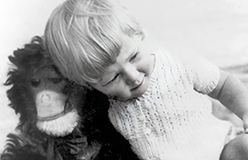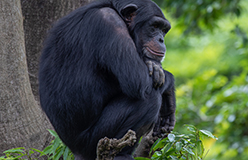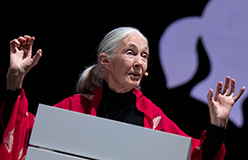Imagine never stopping to work at your job. No matter how long you have been at it. Or how old you are.
This describes Jane Goodall “to a T.” Speaking out and writing, she continued to work toward her goals for chimpanzees and conservation. She continued long after most people would have stopped working altogether.
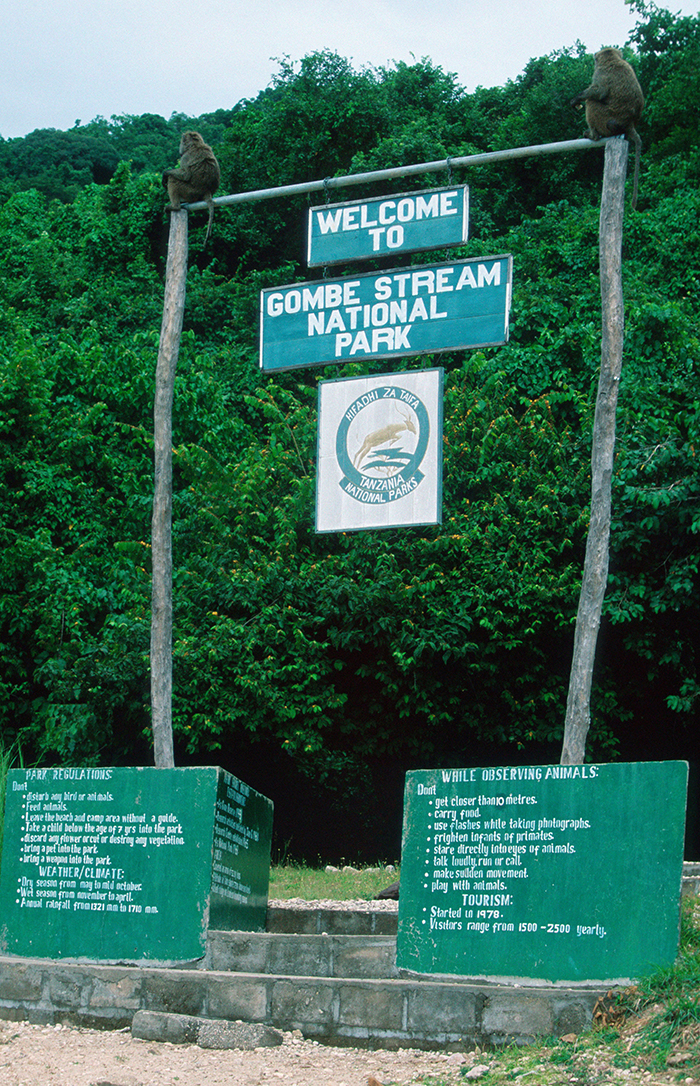
▲ Goodall began her study of chimpanzees in 1960 at Gombe Stream Game Reserve. (It is now called Gombe Stream National Park.) Five years later, Gombe Stream Research Center was founded. The work there has never stopped. It is among the longest field studies of one type of animal in history. Scientists at the center study chimpanzees. Their behavior. Their relationships. Their development. Their social structure. One study involved observing chimpanzee twins.
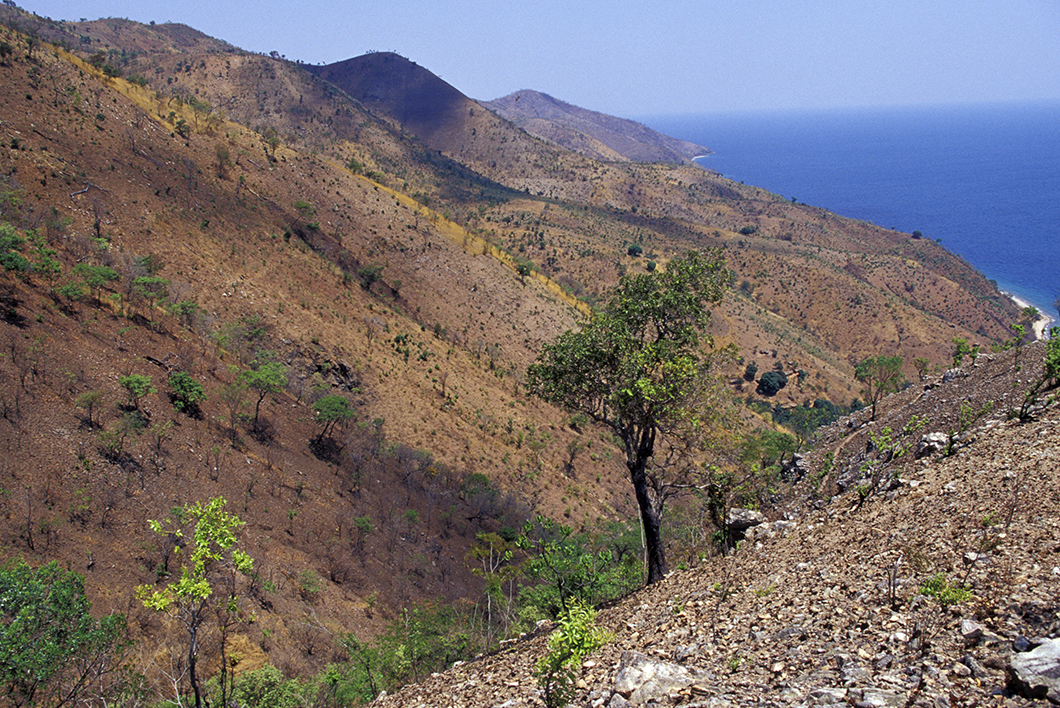
▲ This is an aerial view of Gombe Stream National Park. See all the deforestation? This trend led Goodall to change the focus of her work. She had always done field research of chimpanzees. She changed her focus to conservation. In 1977, she founded the Jane Goodall Institute. The institute works to save the habitats of chimps and other species throughout the world. It accepts the important part people play in the well-being of the environment and the animals that live there. Goodall said that every single one of us matters. “We all have a role to play. We all make a difference every day.”
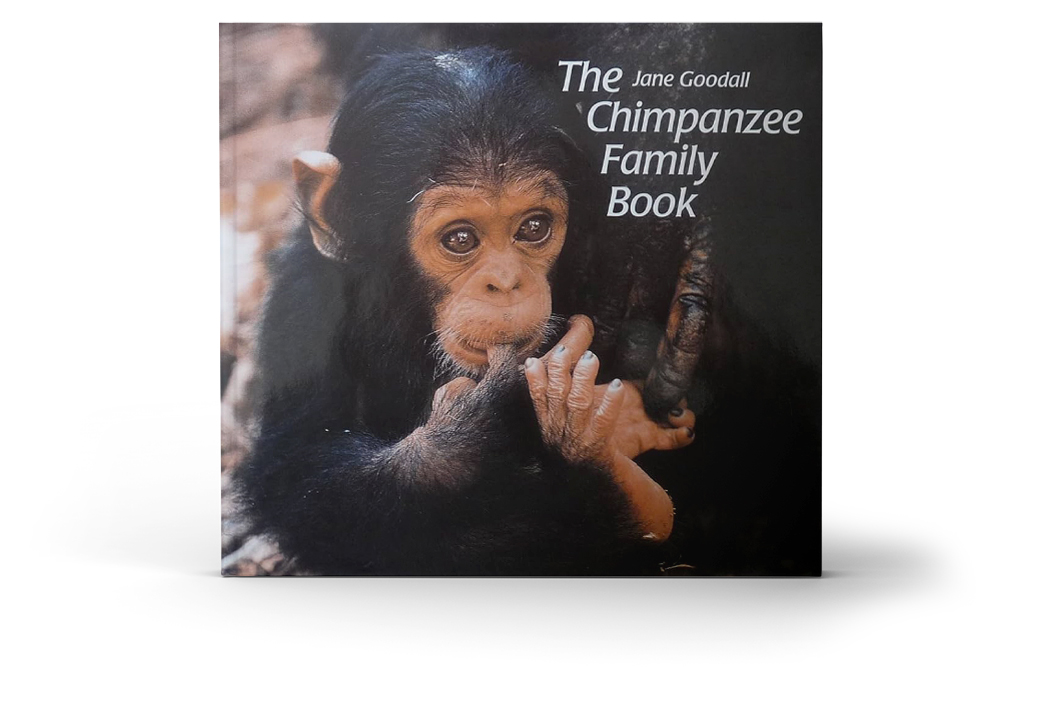
▲ Goodall wrote many books. Some are for adults. Some are for children. One of them, The Chimpanzee Family Book, received the UNICEF/UNESCO Children’s Book of the Year Award in 1989. The award is given every two years. Its focus is on works that express “tolerance and peace and promote mutual understanding based on respect for other peoples and cultures.” Goodall used the prize money she received to have her book translated into other languages. They include Swahili and French. They also include other languages spoken in Africa. Her goal was to help educate children who live in or near areas where chimpanzees also live.
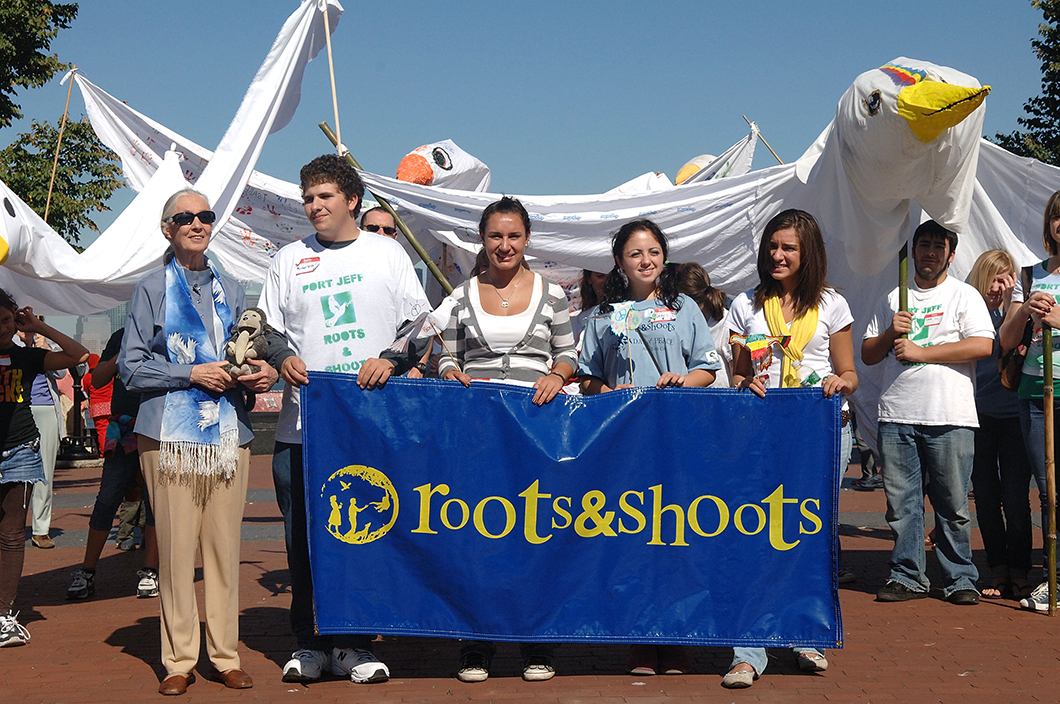
▲ In 1991, Goodall met with a group of teenagers. They were from Tanzania. The teenagers were upset about problems in their community. Goodall was impressed with their concern. She was excited by their desire to find solutions. That’s when she founded Roots & Shoots. Roots & Shoots is part of the Jane Goodall Institute. Since its founding, the program has grown. It is now worldwide. Roots & Shoots is active in more than 100 countries. Participants in each country use their own ideas. They create programs that help their region’s people, animals, and the environment.
Kids all over the world come up with Roots & Shoots projects. The projects may be about protecting monarch butterflies or another species. Or about conservation. Or composting. The project shown here is called Chimp Enrichment Edible Necklaces. It is aimed at chimps who have been thrown out of research projects and entertainment. Or abandoned as pets. They live in the Freedom for Great Apes shelter. The shelter is in Bend, Oregon. During the project, participants strung dried fruit on natural fiber. The food was enrichment for the chimps’ diet. Participants also studied the chimps at the shelter. They discovered many things. One thing was that each chimp has “its own personality.” It also has “its own tragic story.” ▶
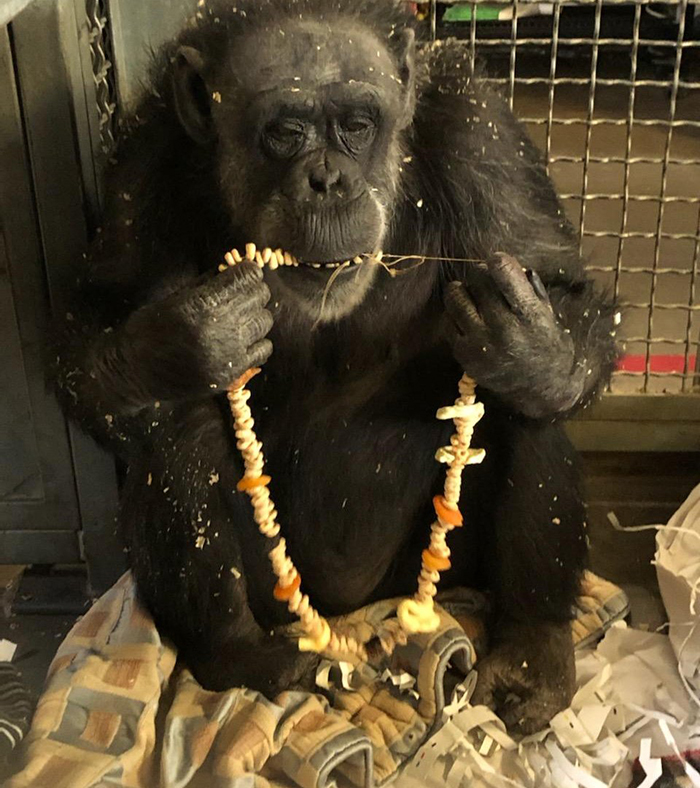
In 2017, Goodall established the Jane Goodall Legacy Foundation. Its purpose is to support programs like Roots & Shoots. Goodall said she created the foundation to allow the programs she developed to continue. And to allow new ones to be started. All this, so that the fight to make a better world for people, animals, and the environment may carry on beyond her lifetime.
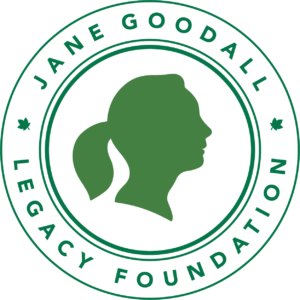
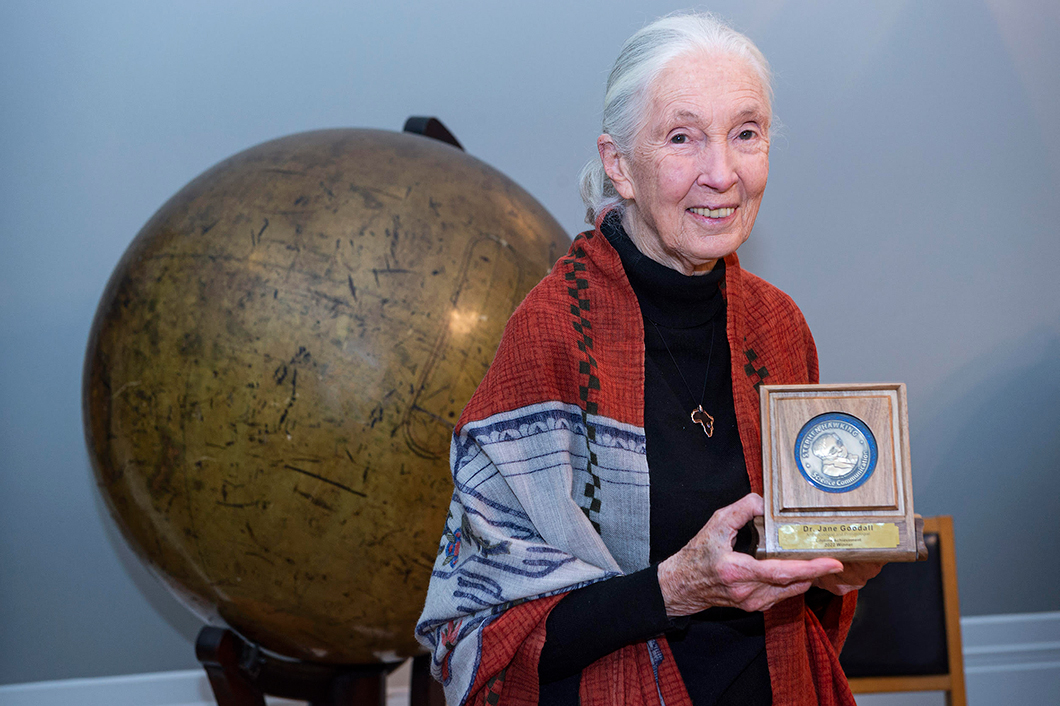
▲ Goodall received the Stephen Hawking Medal for Science Communication in 2022. The award recognizes exceptional ability to communicate science. How? Through television, films, books, and talks. These were some of Goodall’s comments upon receiving the award.
From the beginning I vowed I wouldn’t succumb to scientific jargon. For example . . . in articles I published . . . everywhere I’d written ’he’ or ’she,’ it had been scratched out [by the editors] and replaced with ’it.’ I scratched out the ’it’s’ and underlined the ’he’s’ and ’she’s.’ I also decided that I wouldn’t write anything that couldn’t be understood by an intelligent 14-year-old.
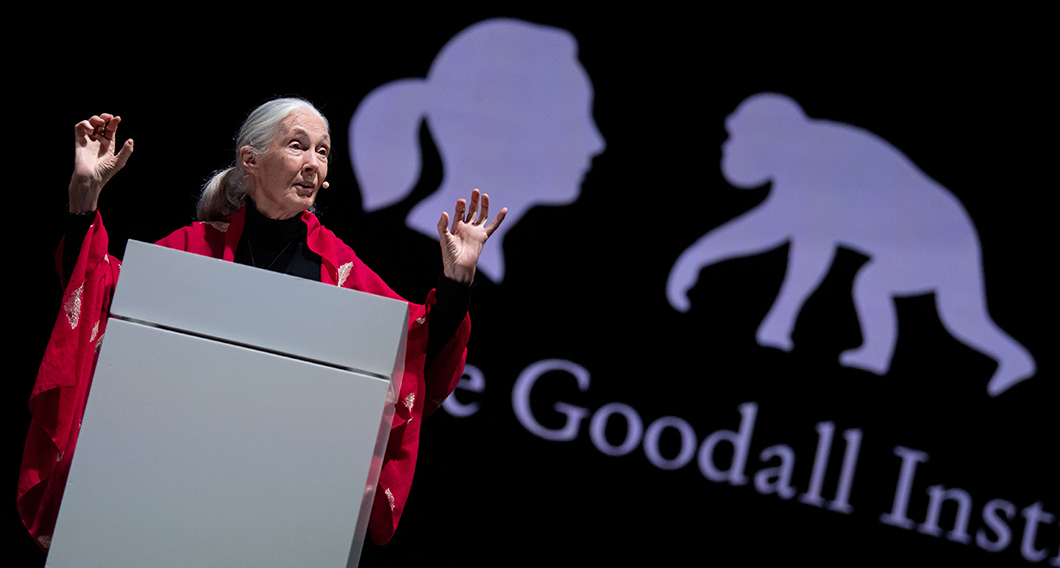
▲ Goodall traveled about 300 days a year. She spoke about environmental matters. She talked about threats facing chimpanzees. Her participation in many events was as a United Nations Messenger of Peace. UN Messengers of Peace help focus attention on the work of the United Nations. Goodall was named a Messenger of Peace in 2002. She helped bring attention to environmental protection by addressing many issues. One issue was deforestation. Another was animal welfare. A third was climate change.
Think Piece!
Why do you think Jane Goodall continued to work on behalf of conservation and the chimpanzees? What might be something you would want to continue doing over a very long period of time?
Jane Goodall passed away on October 1, 2025. She leaves behind a legacy of fearlessness, wisdom, and strength as well as thousands dedicated to carrying on the work she so courageously began.
